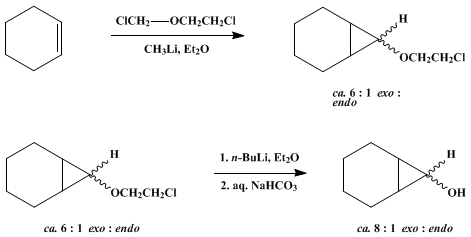Schöllkopf method
The bislactim ether method, also Schöllkopf method or Schöllkopf -Hartwig reaction are called, in organic chemistry synthesis method of optically active amino acids. The method was developed in 1981 by the chemist Ulrich Schöllkopf.
Reaction mechanism
Glycine and valine are reacted to form a cyclic dipeptide ( dioxopiperazine ), which is converted by double methylation in bislactim ether. This can be accomplished by using trimethyloxonium. From this it can be abstracted with butyllithium one of the prochiral protons originating from glycine. The next step is crucial for the stereoselectivity: The resulting carbanion is highly sterically hindered on the top by the isopropyl group of valine and can only be attacked from below. The trapping of the anion with an alkyl iodide therefore always delivers the enantiomer produced by backside attack. Finally, the dipeptide is cleaved by acid hydrolysis in the two amino acid methyl ester, which must, however, be costly separately.
Schöllkopf chose valine with that of the natural proteinogenic amino acids with the largest aliphatic, non-reactive, non-chiral residue to achieve a high stereoselectivity. As a rule of about 95% enantiomeric excess (ee) can be achieved.
Possibilities and limitations
With the Schöllkopf method, all amino acids can be produced, for which a suitable capture reagent can find (RI ), which leads under the reaction conditions to give the desired product. The radical R is not limited to alkyl, but can also be constructed more complicated. The bislactim ether procedure is exclusively as a laboratory method for the synthesis of small amounts of exotic amino acids application. An industrial application of the method is not known, since the atom economy is limited.










